Jim Mitchell began his career at Industrial Light & Magic on Terminator 2: Judgment Day! He went on to work on many of the studio’s shows including Death Becomes Her, Jurassic Park, The Mask and Mars Attacks!. He recently took care of the effects for series like Sense8 and Electric Dreams.
What is your background?
I went to college for electrical engineering but was always interested in filmmaking especially animation and visual effects. I eventually got a job at ILM in the computer graphics department. It was a great place to work and learn. Terminator 2 was the first movie I worked on. From there I worked on the original Jurassic Park then worked my way up to VFX supervisor on such films as Jurassic Park 3, Sleepy Hollow and a couple of Harry Potter films to name a few.
How did you get involved on this show?
Theresa Corrao, a VFX Producer and friend of mine had worked with Steven DeKnight previously and recommended me.
How was the collaboration with the showrunners and directors?
I enjoyed working with all the show runners and directors. It was my job to listen to all of them (we had 4 directors) and help bring their vision for their episodes to life but they were all open to ideas I had to make the VFX part of the storytelling. As much as possible, we tried to get them to storyboard big VFX sequences. Often we’d take those and work out previs or Phil’s stunt team would do stunt-vis to fine tune the ideas. The boards helped keep all the departments on the same page. We never locked the directors to these board though. I always tried to give them the flexibility to change things on the day if something didn’t work or was better.
We also had incredible support and freedom from Jason Sperling at Netflix to do our job.
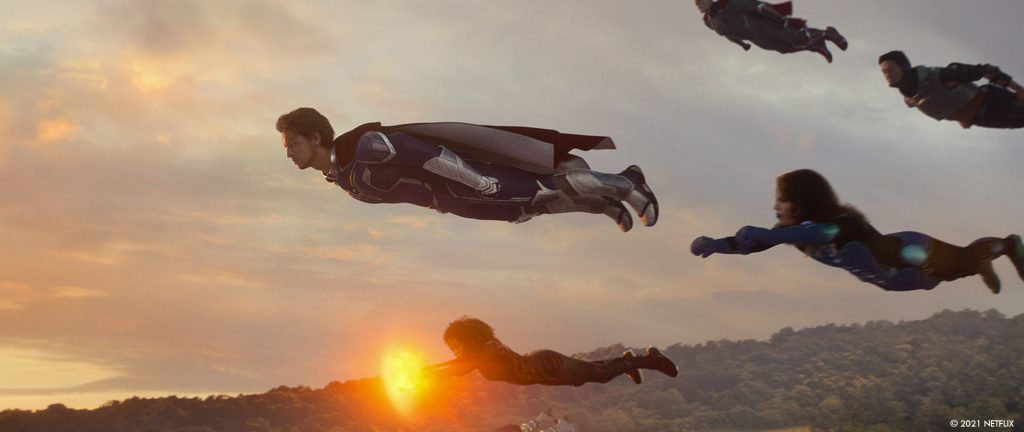
How did you organize the work with your VFX Producer?
It all begins with a good breakdown of the scripts both for number of shots and type of shots. You want to try and keep whole sequences with one vendor as much as possible but ultimately there will be a sharing of shots to consider. There’s a lot of bidding and you’re constantly juggling things as the scripts evolve — sequences grow or are sometimes cut out altogether. Christina Graff (VFX Producer) and Paul Russo (Associate VFX Producer) were so good at keeping the VFX department organized in terms of the budget, the crew and interfacing with the other departments which gave me a lot of creative freedom in working with the directors and show runners.
What are the main challenges with a superheroes series?
I would say the biggest challenge was to do something different. We’ve all now have seen so many superheroes shows that you want make sure you can bring something new to the genre. What I liked most about Jupiter’s Legacy was that there was more to the story and VFX work than just superheroes and their flashy powers. We had those big superhero effects but a big part of this show was creating sequences that were more grounded in reality such as an entire 1930’s big city, the Kansas dust bowl, a mysterious island and a raging ocean storm to name a few.
So I guess the challenge on this show was just the variety and scope of work and finding that balance between big superhero sequences and more supportive/invisible type of effects.
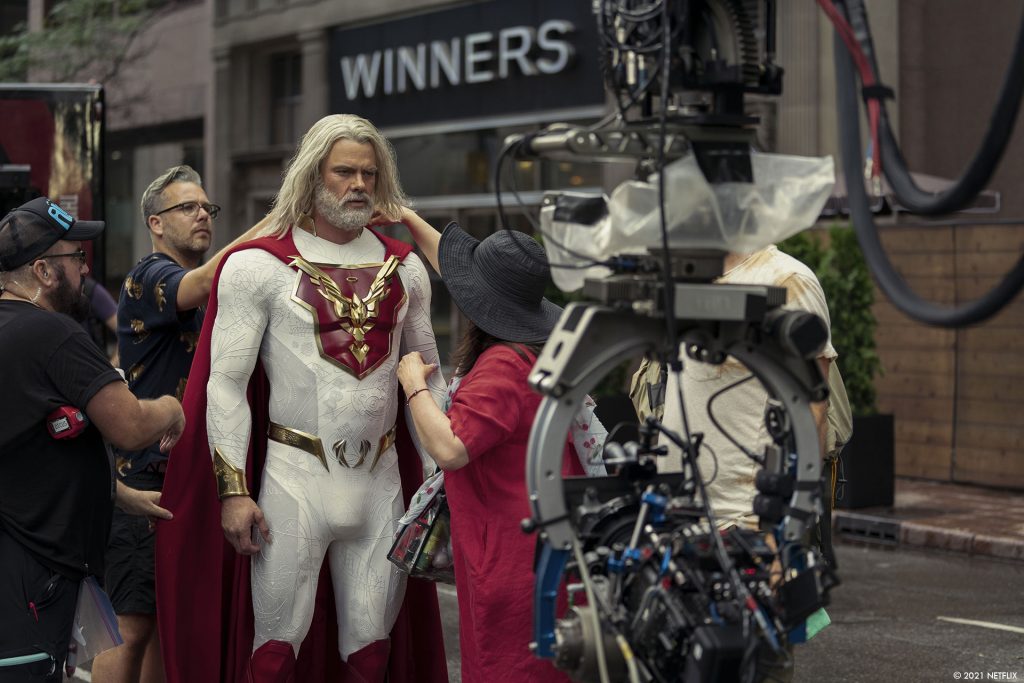
How did you work with the art department to design their various powers?
We worked very close with the art department up in Toronto during pre-production and throughout the shoot but we also had our own VFX illustrator and concept artist Houston Sharp dedicated to working with me. Houston is an amazing artist. I could describe some broad ideas and he would always bring back amazingly focused concepts and possibilities for us to reference before diving into tricky 3d development. It’s way quicker and cheaper. The vendors also were very good at offering up 2D concepts or even quick animation tests as we developed the powers.
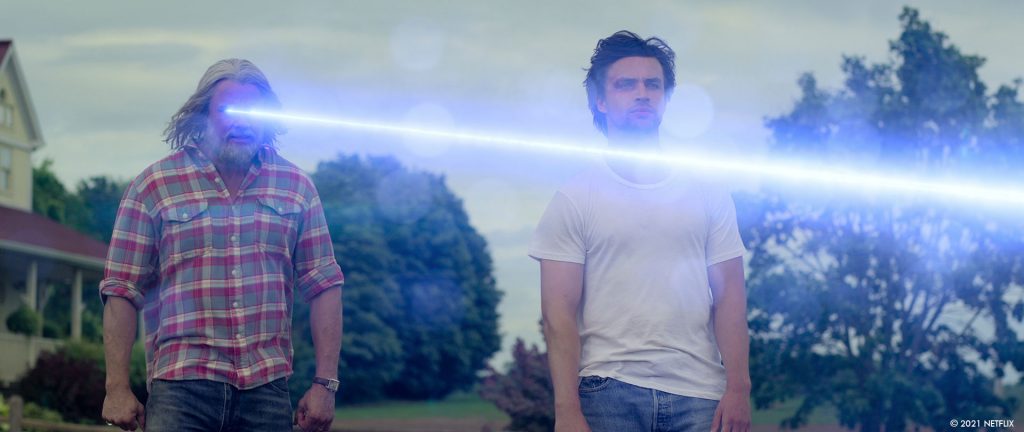
Can you elaborates about your collaboration with the SFX and stunts teams?
On any VFX heavy show like this, it’s very important that you’re interfacing with all the departments but SFX and stunts are especially important. Anytime you can get something in camera whether an explosion or stunt doubles falling to the ground it helps anchor the VFX in reality. It was always a dialogue between Shane, Phil and myself asking what’s the best way to achieve a certain shot. If they could do it, all the better but when they ran into limitations for whatever reason we were there. More often than not, it’s a combination of all the disciplines that make the shot work.
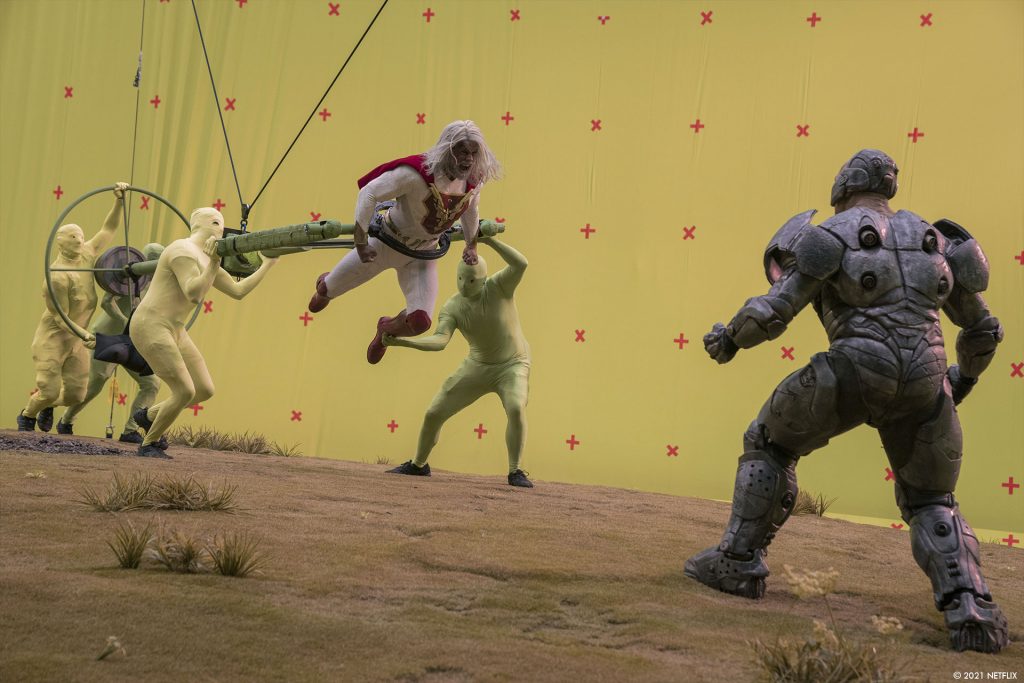
Which stunt was the most complicate to enhance?
I’d have to say the entire Hilltop Battle. It was by far the biggest sequence with the most stunts and every shot to some degree requiring VFX. Phil and his team did some amazing stunts but inevitably there’s a lot of rig cleanup and enhancement of things like the capes to make it work. DNEG actually did a bunch of shots where the superheroes and Blackstar were completely digital in a completely cg environment that were critical to making the sequence work and couldn’t have been done any other way.
A big part of the series take in the past. How did you recreate this period and especially New York?
The VFX work involving the 1930’s Depression era ranged from digitally de-aging one of the main characters to creating multiple period locations such as a desolate road in the Kansas dust bowl and a working steel mill. Sometimes we found locations to enhance or cleanup of modern elements but often we created the entire environment. This was case with the Chester’s Rooftop sequence. The art department built a partial rooftop set which we shot outside against greenscreen. The set was only about 12 feet off the ground but was meant to look like it was some 20 stories high overlooking a growing metropolis that was a cross between New York and Chicago. We were able to gather a bunch of old photos of those cities in the day for reference. Because we were meant to be so high up and would see in all directions, we basically built the whole city in 3D. MELS created a bunch of buildings that were fairly modular so we could mix and match and move them around to suit the different camera angles. Once we were happy with the layout, Jonathan and his team would detail the buildings with signage, water towers, smoke stacks, etc. If we saw the streets below, MELS added digital pedestrians along with trams and period cars driving around.
Can you elaborates about the shooting and the creation of the shots on the boat?
The sequences with the Black Lotus ship out on the open ocean were a major undertaking. Early on we decided it just wasn’t practical or cost effective to shoot on real water plus it was highly doubtful we would find a proper period cargo ship. So the art department designed our own ship and built approximately a third it. Shane Million and his SFX department then mounted the partial ship to a huge gimbal with water canons all around. We shot everything at an old parking lot out side of Toronto where we surrounded the set on three sides with inflatable greenscreen walls that were about 35 ft high. The directors and DP’s had complete flexibility to shoot in any direction. Depending on the shot, Important Looking Pirates (ILP) created three versions of the ocean and waves — calm (pre-storm), stormy and choppy (post storm). They also often added digital rain and mist. On some wide shots, we’d have to add the missing back of the ship and have it interacting with the digital ocean. Other times, the shot is completely digital — boat, crew, ocean and sky. The ocean and storm required a lot of intensive water simulations so we basically mocked up the entire sequence initially with simple greyscale layouts to make sure everything was working before committing to the big renders. Niklas and his team at ILP did a great job to make us really feel we were out at sea.
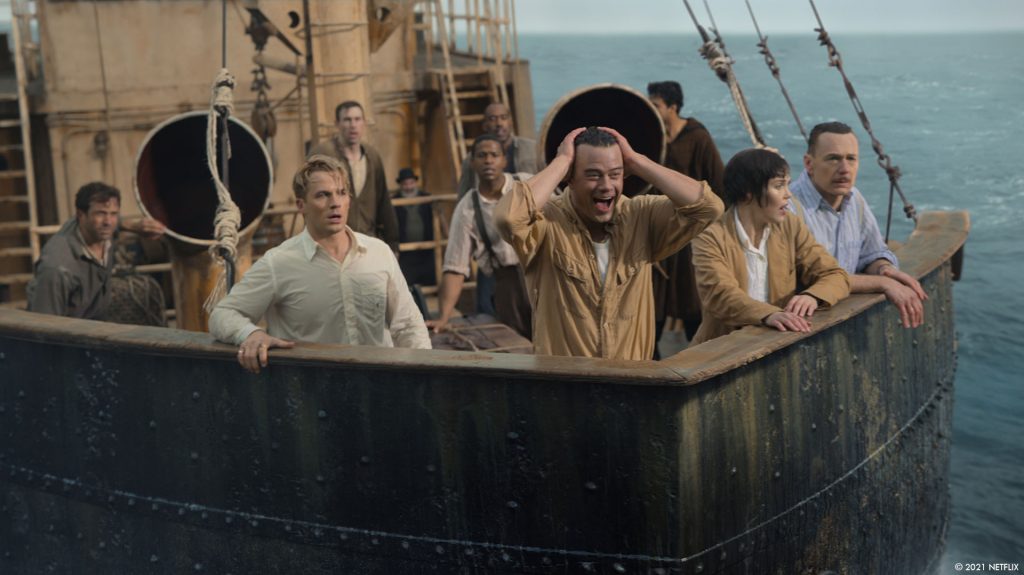
Can you explain in detail about the design and creation of the mysterious island and planet?
Initial discussions had us actually going to an island like Hawaii or Dominican Republic to shoot but when that became prohibitive, VFX was tasked with enhancing and tying together a lot of exterior locations around Toronto with matte paintings. The view of the entire island that we see from the boat was completely digital. Houston used the image of the island with prominent peaks from the comic as a base but made it look real. We steered away from the more tropical look that’s in the comic and pushed harder into a granite mountainous look which suited the Canadian locations. Also, being from California, the rock faces of Yosemite were a big influence for me. ILP then took Houston’s concept and pushed it into the 3d world since we had to see it from multiple angles.
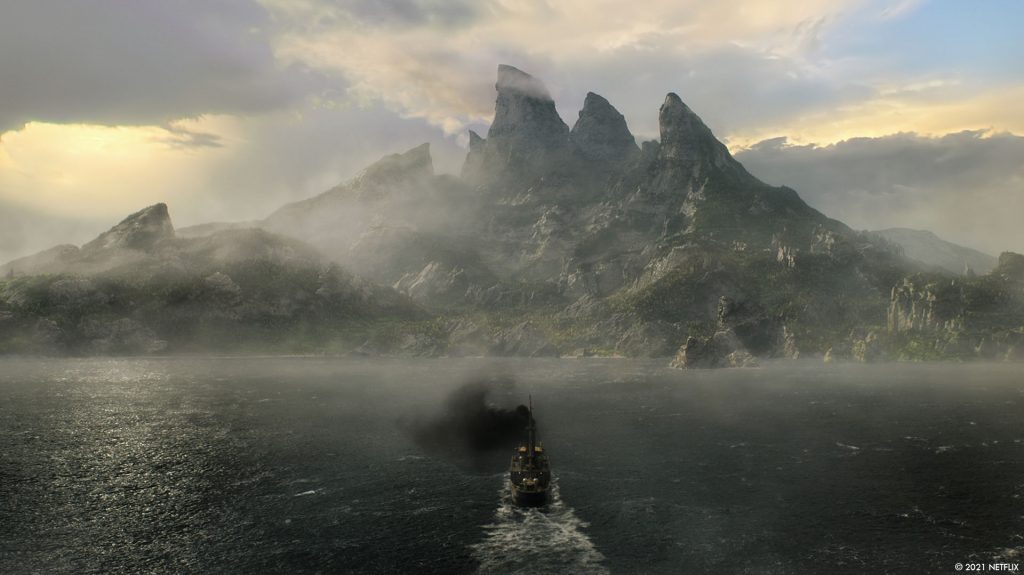
Once on the island, Mr. X took over with sequences that included animated trees exploding from the ground, island vistas, a huge simulated sandstorm and finally a light show of alien symbols that open up a portal to an alien world. The scenes on the alien planet were all shot on a greenscreen stage with a simple sand covered floor. Early on, Houston and I worked on concepts of what this planet or rather moon of Jupiter would look like. We basically kept it simple and stark — more like a vast Mars landscape — so that your eye would be drawn to this beautiful alien temple in the distance. Houston did a bunch of design variations on the temple that was described as a structure of moving glass. We did a lot of concepts where it just wasn’t right until Houston did one where the temple was floating just above the ground and we all thought that was cool and different. Mr. X took the design and built a 3d model of this flower like structure where they could animate the parts spinning and turning on each. It took a long time to render because of all the interactive and colorful lights refracting through the moving glass. On top of that were many layers of these undulating tendrils of light that really gave the temple an ethereal and living quality like an alien sun or god. I think it’s quite beautiful and mesmerizing.
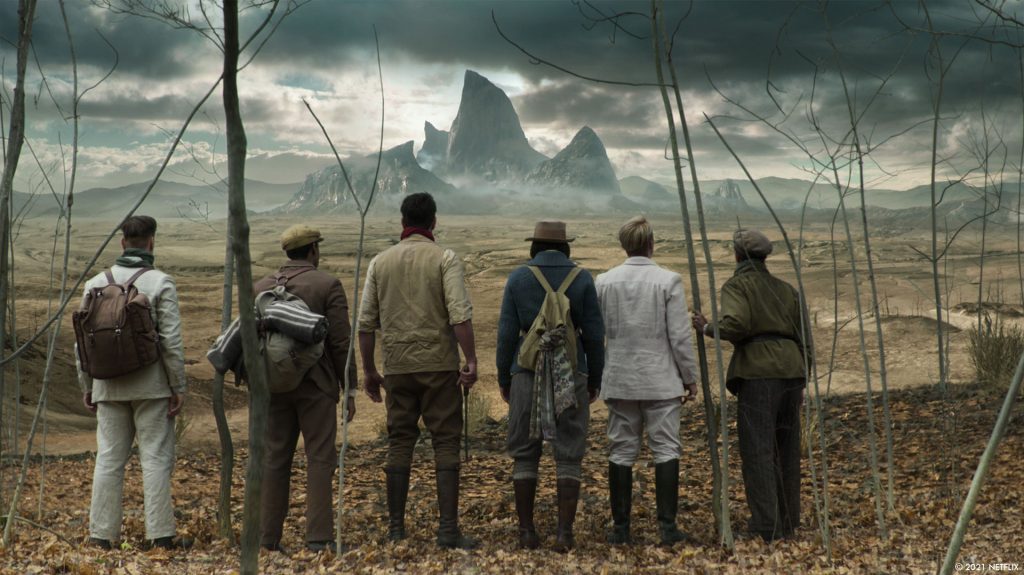
One of the heroes can create manipulate minds. How did you design and create these visions?
You’re talking about Brainwave and what we called his Psychic Construct power where he could create or construct a new world of his imagining. I initially keyed off of some of the drawings in the comic that showed glass cubes or a faceted look to the constructs. I liked the idea of using the reflective and refractive properties of glass to transition the worlds. By sliding and building up planes of glass we could fracture and segment one background plate until it comes together and resolves into another background plate. We tried as much as possible to give dimension to the reveal by using camera movement and parallax. I also liked how the glass effect would tie back to the alien temple.
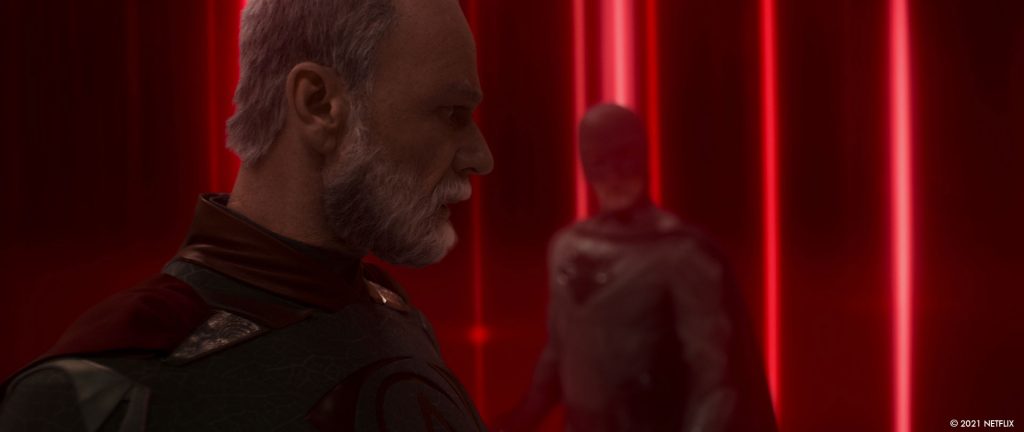
Which sequence or shot was the most challenging?.
I guess the answer would have to be the entire Hilltop Battle just for sheer size and scope. Every VFX trick in the book — fully digital landscape, digi-doubles, elaborate super powers — was used to create the sequence.
How did you choose the various vendors?
While budgets are part of the equation, I mainly try to cast the vendors to their strengths. Some vendors for example are better at or had more experience with creature/character work while another strictly do 2d type work. Or another might have a good pipeline for 3d environments. We also tried to spread the work out. I always think it’s better to share the load on big shows like this.
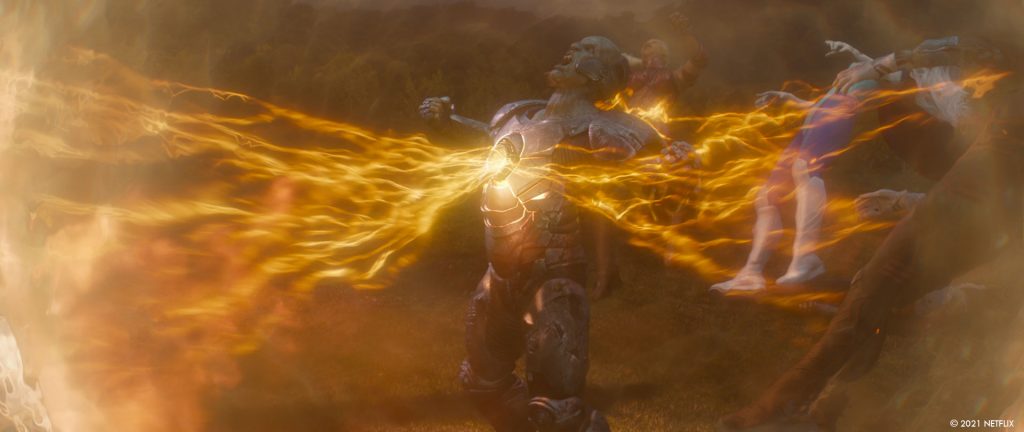
How was the collaboration with their VFX Supervisors?
The collaboration was great. It’s so critical to have a strong and collaborative supervisors at the facilities you are working with. I was lucky enough to work with Xavier Bernasconi from DNEG, Niklas Jacobson at Important Looking Pirates, Matt Glover at Mr X, Kirk Brillon at Spin, Jonathan Piche-Delorme at MELS and Jiwoong Kim at NetFX. They all worked their butts off and were always enthusiastic about the show and pushed to make it better.
I also had Wes Sewel as an On-set VFX Supervisor who was amazing and big help to the directors during the shoot.
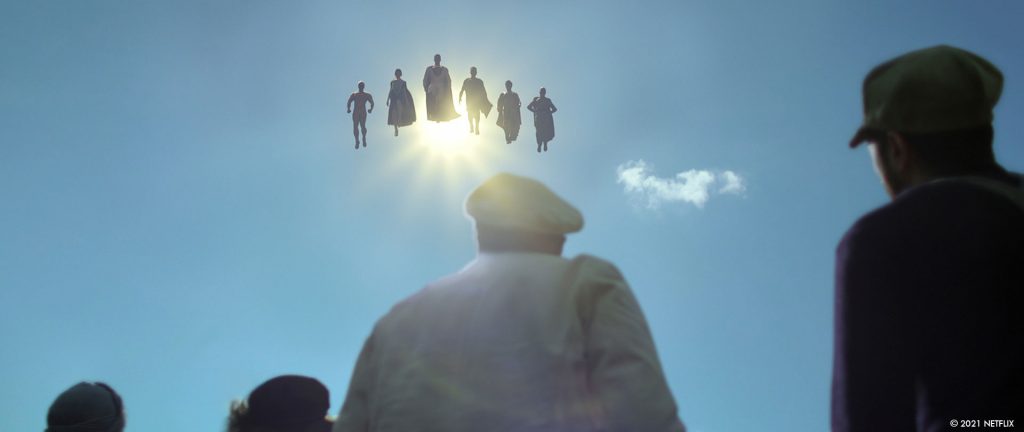
Is there something specific that gives you some really short nights?
Not really. Everything is possible. It’s just getting enough time to do it right. So I guess deadlines keep me up. 🙂
What is your favorite shot or sequence?
Hard for me to pick a favorite. I always look at the show as a whole and that all the effects works together. I’m proud of the variety of work we did and that the VFX were as much about supporting the story as they were about super powers.
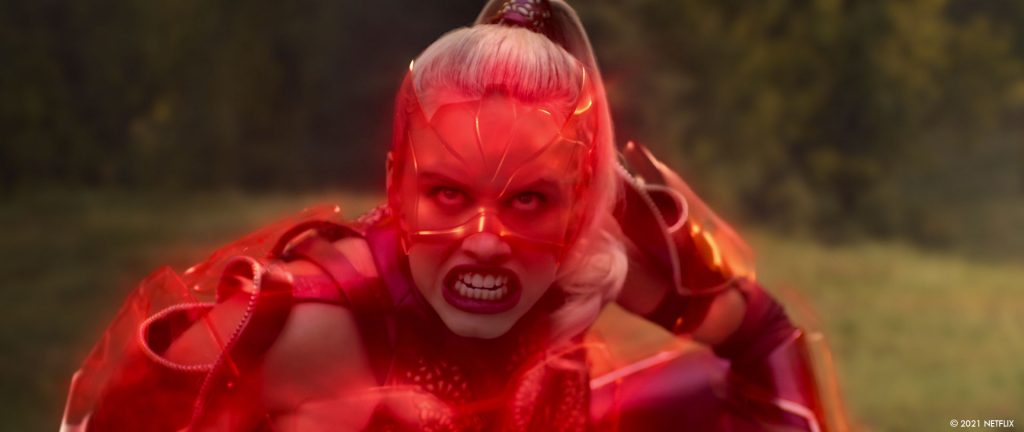
What is your best memory on this show?
It’s always the people that I remember. We had an incredible team not just in the VFX department but on the whole show. Getting to work with talented DP’s, directors, actors, costumers, grips, gaffers and camera operators, etc. is always the best part.
How long have you worked on this show?
I worked on it for about a year and half. VFX Supervisor Paul Graff took over with another 6 months of work to go and completed the show.
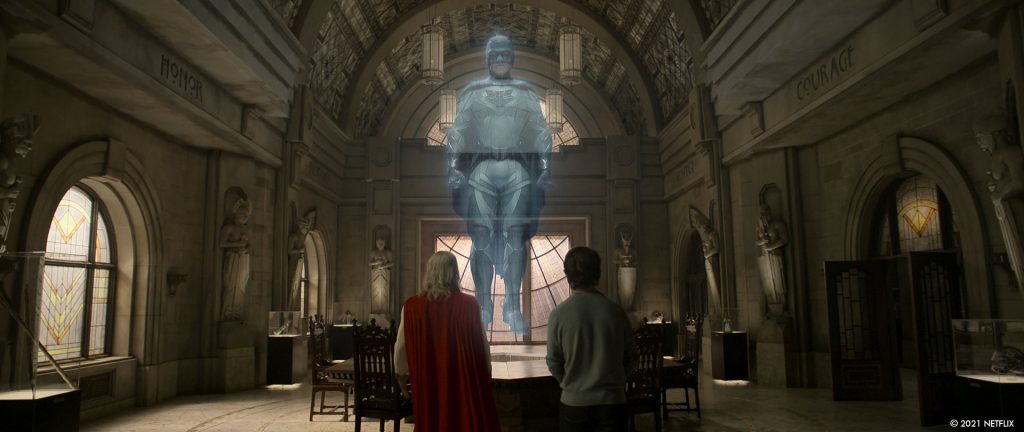
What’s the VFX shots count?
I believe it was close to 3’500.
What was the size of your team?
I believe we generally were about 10 people in the department for both the shooting and post.
What is your next project?
Not sure. Currently, working on a couple of personal film projects.
What are the four movies that gave you the passion for cinema?
The Godfather Part 1 & Part 2, Blade Runner, Brazil, Alien. I guess that’s really five.
A big thanks for your time.
WANT TO KNOW MORE?
DNEG: Dedicated page about Jupiter’s Legacy on DNEG website.
Netflix: You can now watch Jupiter’s Legacy on Netflix.
© Vincent Frei – The Art of VFX – 2021




